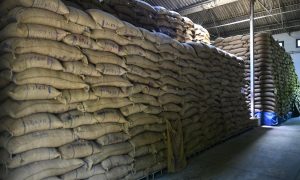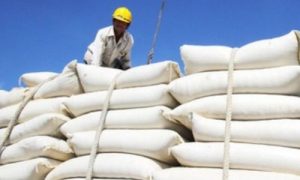Commerce minister lauds role of rice in Cambodia’s export economy

Cambodia views rice as a key strategic crop for food security and export. At the Cambodia Rice Federation’s 10th anniversary, Minister Cham Nimul praised its role in boosting production and exports. In 2024, Cambodia exported over 650,000 tonnes of rice to 75 countries, earning nearly \$2 billion. Plans include attracting investment, promoting branding, and enhancing logistics via the Techo Funan Canal.
The production of rice is considered a key strategic crop by the government for ensuring food and nutritional security. It is also a high-potential export commodity among the priority-listed agricultural products selected for annual promotion in international markets, according to Minister of Commerce Cham Nimul.
Speaking at the 10th anniversary celebrations of the Cambodia Rice Federation (CRF) in Phnom Penh on June 16, Nimul highlighted the evolution of the CRF, which was officially established on August 8, 2014. It has been recognised by the government as the sole partner for policy dialogue and as the official representative of Cambodia’s rice industry on the international stage. The CRF has actively supported the implementation of policies to promote rice production and export to global markets.
The minister noted that through joint efforts between CRF, development partners and stakeholders, Cambodia has transformed into a country with a significant rice surplus. Notably, at the beginning of the 7th legislative mandate, the commerce ministry facilitated the signing of a memorandum of understanding (MoU) to export 500,000 tonnes of rice to China, opened export markets to Indonesia via the Green Trade Company for 37,500 tonnes and arranged the export of 4,000 tonnes to Timor-Leste.
In 2024, Cambodia exported more than 650,000 tons of rice to 75 countries.
“Rice is Cambodia’s strategic crop for food and nutrition security. It is not only a basic staple food but also a high-potential export commodity among the prioritised agricultural products for export promotion,” said the minister.
“Through Green Trade, the commerce ministry has actively negotiated with several countries in the region to further expand export markets for Cambodian rice,” she added.
In light of past achievements, the minister also made several key recommendations to CRF, rice exporters and all relevant stakeholders to help further advance Cambodia’s rice sector.
These included:
Attracting more investment: Assess opportunities to bring in more investors for production and to enhance value addition across the rice production chain, serving both domestic supply and boosting Cambodia’s global competitiveness.
Conduct lawful, ethical business: Ensure consistent and ethical commercial operations, uphold transparency, supply competitive rice, protect stakeholders’ interests and strengthen trust in Cambodian rice both locally and internationally.
Promote branding and intellectual property: Support collective branding and improve Cambodian rice quality in terms of volume, safety, packaging and presentation to preserve the reputation and sustainability of rice exports.
Enhance cooperation: Continue working with relevant departments, especially Green Trade and export promotion task forces, to implement measures that improve quality and efficiency, strengthen existing markets and expand new ones.
Modernise CRF operations: Update organisational structures, procedures and governance in preparation for upcoming elections of the CRF president and board members.
Sun Chanthol, first vice-president of the Council for the Development of Cambodia, also addressed the event.
He agreed that the rice sector plays a vital role in food security and the national economy. Over the past decade, it has contributed to food security stability and the steady expansion of trade and investment potential. The industry has attracted investment from both domestic and foreign investors. The number of modern rice milling facilities has grown from fewer than 10 a decade ago to more than 80 today, equipped with the latest global technologies.
Additionally, he highlighted the far-reaching benefits of the Techo Funan Canal Project, which, once completed, will become part of Cambodia’s logistics system. This canal will accelerate the movement of goods, including rice, from Cambodia to international markets, enhancing the efficiency of supply chains.
Data released by the CRF on June 4 showed that from January to May 2025, Cambodia earned a total of $993.24 million from rice exports, a 6.78% increase over last year.
According to the CRF, milled rice from the Kingdom was exported to 63 countries/territories, amounting to 344,199 tonnes and generating $252.3 million in revenue (compared to $219.91 million in the same five-month period of 2024). Cambodia also exported 3,102,973 tonnes of paddy rice to neighbouring countries, earning $740.94 million — up from $710.23 million during the same period in 2024.
In 2024, Cambodia earned a total of $1.98716 billion from rice exports — of which paddy rice accounted for $1.496 billion and milled rice $419.19 million.
To Read more about Rice News continue reading Agriinsite.com
Source : Phnom Penh Post
















